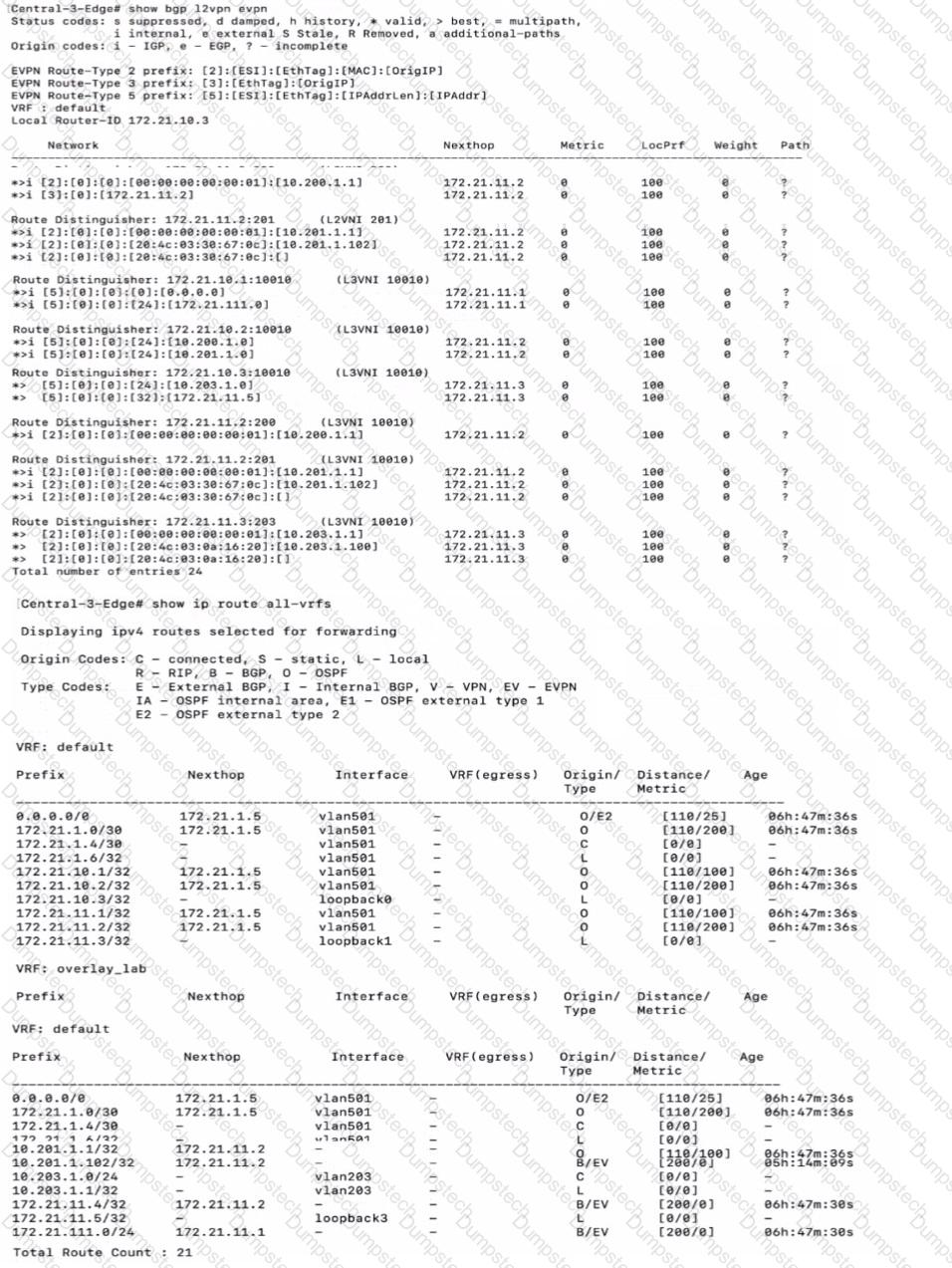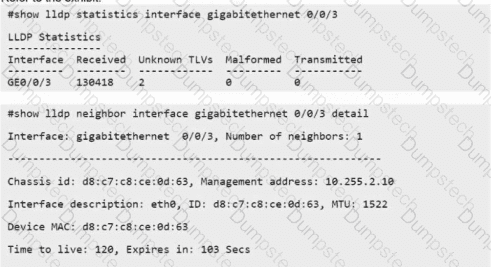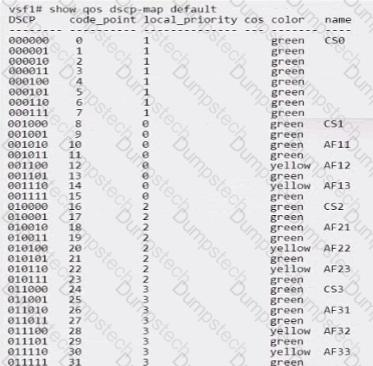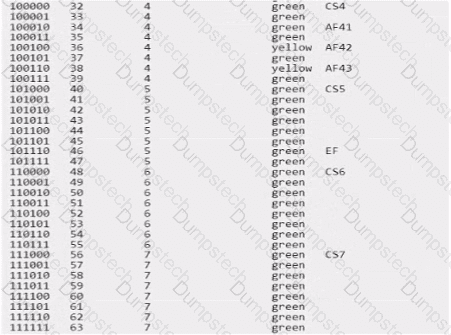New Year Sale Limited Time 70% Discount Offer - Ends in 0d 00h 00m 00s - Coupon code = simple70
Pass the HP Aruba Certified Professional - Campus Access HPE7-A07 Questions and answers with Dumpstech
Exhibit.

Which statement is true given the following CLI output from a CX 6300?
An OSPF router has learned a path to an external network by both an E1 and an E2 advertisement. Both routes have the same path cost. Which path will the router prefer?
Which statement is true given the following CLI output from a CX 6300?

A customer has deployed an AOS 10 mobility gateway cluster consisting of three controllers at a single site The WLAN is configured to tunnel wireless device traffic to the AOS 10 mobility cluster. The clients are authorized to use WPA2-Personal. An end-user has opened a ticket with the helpdesk stating they cannot connect their client device to the network. There are other devices currently associated with the SSID with no issues.

Reviewing the output, what Is the issue?
A customer with a gateway connected to a device on gigabitethernet 0/0/3 configures an Asset ID TLV on the device for inventory management.
Refer to the exhibit.

The customer mentions the Asset ID is not shown. What is causing the issue?
The ACME company has an AOS-CX 6200 VSF switch slack with an uplink over subscription ratio of 9.6:1. They have indicated that their low-priority TCP traffic has been flagged with a DSCP marking coloring them yellow.
Refer to the exhibit.


They are considering adding two more nodes to the stack without adding any additional uplinks due to existing wiring constraints. One of their architects has suggested adding the following configuration:

What would be the impact of applying the acmethreshold profile as shown? (Select two.)
Which statement about the AOS-CX VOQ feature is true?
What is me recommended configuration to ensure link aggregation is consistent in a campus topology using VSX with two aggregation switches and downlinks to access switches?
A client connecting to a tunneled open network is receiving the wrong VLAN Your customer has a gateway and has sent over a packet capture from a switch port mirror taken from the upstream switch with a packet capture from the IPsec tunnel and the GRE tunnel to help Identify the VLAN being sent from the controller to the AP.
Where will you see the VLAN assignment?
A deployment using AP-635S is connected to a stack of CX 6300s as shown.

The output of the snow LACP interfaces shews the following:

What is causing this issue?
